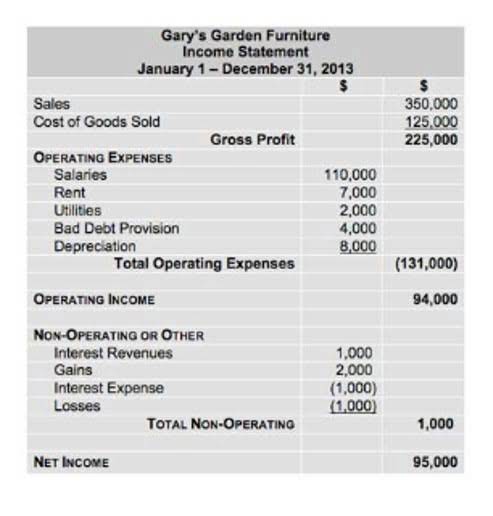Bookkeeping
Incremental Cost: How to Calculate and Use It for Decision Making and Cost Benefit Analysis

They need to compare the additional costs (such as machinery purchase, maintenance, and labor) against the incremental benefits (increased production, sales, and revenue). By analyzing the net impact, they can make an informed decision on whether the expansion is financially viable. From a financial perspective, incorporating incremental cost enables businesses to evaluate the cost-effectiveness of various options. It helps in identifying the additional expenses incurred when producing or offering more units of a product or service. By understanding the incremental cost, businesses can determine the optimal quantity to produce or the most profitable pricing strategy. Certain costs will be incurred whether there is an increase in production or not, which are not computed when determining incremental cost, and they include fixed costs.

Benefits of Social Media Marketing for Small Businesses
- By considering different perspectives and utilizing tools like cost-benefit analysis, individuals and businesses can make more informed choices that align with their goals and objectives.
- From an economic perspective, incremental cost embodies opportunity cost—the value of the next best alternative foregone.
- In summary, while incremental cost analysis provides valuable insights, decision-makers must recognize its limitations.
- After almost a decade of experience in public accounting, he created MyAccountingCourse.com to help people learn accounting & finance, pass the CPA exam, and start their career.
Incremental cost-effectiveness ratio at 9 months postpartum is $310,030 per mean decrease in depression score. ICER per DALY averted is $24,754 at 6 months and $4,169 at 9 months (Table 3). With sensitivity analysis, ICER per DALY averted at 6 weeks postpartum ranged from $17,906 to $54,354 and from $3,353 to $4,977 at 9 months (Table 4). Therefore, our findings show that Healthy Options is not cost-effective because the ICER per DALY averted is above 2017 GDP per capita for Tanzania, $975.9 31. For instance, a company merger might reduce overall costs of because only one group of management is required to run the company. Producing the products, however, might bring incremental costs because of the downsizing.
Incremental Cost vs. Marginal Cost
- All of these factors can negatively affect health and quality of life for both the mother and her child 15.
- This could mean more deliveries from vendors or even more training costs for employees.
- Furthermore, fixed costs can be difficult to allocate to a certain business area.
- If the LRIC rises, it is likely that a corporation will boost product pricing to meet the costs; the inverse is also true.
- It helps us understand how sensitive the results are to variations in these variables.
- ICER at 6 weeks postpartum is $89,699 per mean decrease in depression score and $310,030 per mean decrease in depression score at 9 months.
- And would possibly provide evidence of wider cost-savings from depression treatment and thus improve cost-effectiveness of the Healthy Options intervention.
The fixed cost will be reduced in comparison to the cost of each unit made, enhancing your profit margin for that product. A variable cost is a specific material utilized in production because the price increases as you order more. Bulk orders are frequently discounted, introducing a variable into your incremental calculation. The intervention incorporated problem-solving therapy (PST) and cognitive behavioural therapy (CBT). This was a first intervention of its kind in Tanzania and results from the trial indicated that Healthy Options is effective in treating depression in perinatal women living with HIV 17. This study was conducted to assess cost-effectiveness of the Healthy Options intervention in treating depression in perinatal women living with HIV in comparison to Bookstime enhanced usual care for depression (EUDC).

Understanding Contribution Margins
By comparing these incremental costs, the company can select the route that minimizes overall expenses while meeting delivery deadlines. Learn about the definition and calculation of incremental costs in finance, along with examples, to better understand their significance in financial analysis. Suppose the retail chain estimates that the online platform will generate an additional $100,000 normal balance in annual revenue.

Long-Term Incremental Cost Analysis

Results from this study show that Healthy Options, a psychosocial support group intervention, is effective but not cost-effective in reducing depressive symptoms among pregnant women with HIV in Tanzania. Healthy Options worked with CBHWs to successfully deliver mental health services; this likely represents a more feasible model of depression management given the scarcity of mental health specialists in Tanzania. Another limitation is that our study has not shown the long-term cost-effectiveness of treating depression in HIV positive perinatal women. As indicated above, treatment of depression in women may have long-term benefits for the mother and her child/children. And would possibly provide evidence of wider cost-savings from depression treatment and thus improve cost-effectiveness of the Healthy Options intervention.
- This allows individuals and organizations to assess the value and feasibility of each option before making a final choice.
- By comparing these incremental costs, the company can select the route that minimizes overall expenses while meeting delivery deadlines.
- Understanding the concept of incremental cost is crucial for decision making and cost-benefit analysis.
- When stakeholders propose additional features, project managers assess their incremental cost against the project’s overall budget.
Costing of the intervention
- Healthy Options intervention demonstrated effectiveness in reducing depressive symptoms among pregnant women with HIV in Tanzania.
- Understanding incremental expenses can assist a business in improving its efficiency and saving money.
- Long-run incremental cost (LRIC) is a cost concept that forecasts expected changes in relevant costs over time.
- From a business standpoint, incremental cost can be used to determine the profitability of a new product or service.
- The primary outcome for the Healthy Options intervention was level of depressive symptoms.
- Incremental costing helps assess the effectiveness of these campaigns.
Research costs were excluded from the analysis to focus only on incremental cost of the intervention. Research costs are costs that were related to ethical clearance and randomization. These costs were excluded because the focus was to include only costs that would be incurred if the intervention was to be adopted and scaled up in a incremental cost non-research setting.